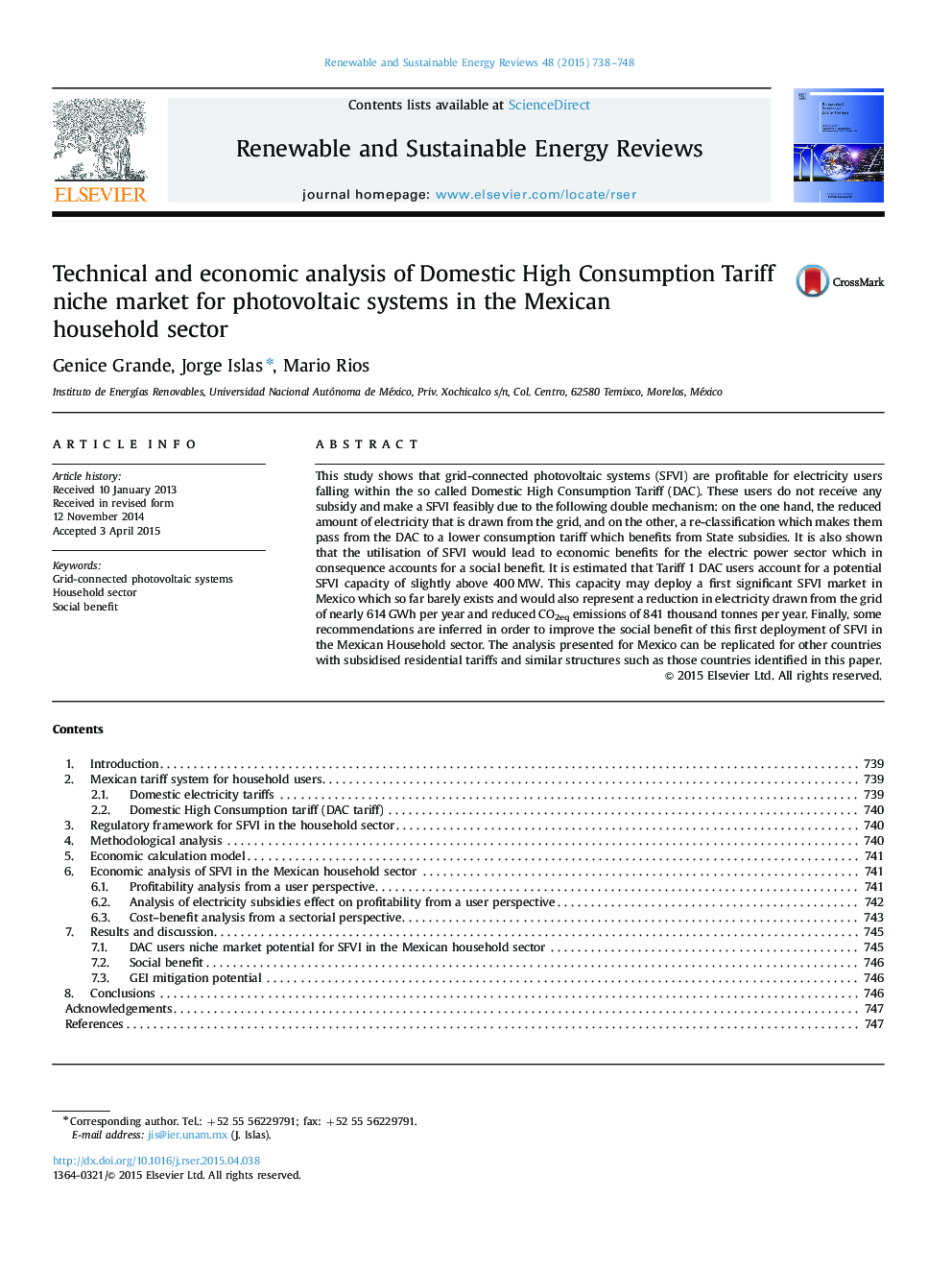| Article ID | Journal | Published Year | Pages | File Type |
|---|---|---|---|---|
| 8116552 | Renewable and Sustainable Energy Reviews | 2015 | 11 Pages |
Abstract
This study shows that grid-connected photovoltaic systems (SFVI) are profitable for electricity users falling within the so called Domestic High Consumption Tariff (DAC). These users do not receive any subsidy and make a SFVI feasibly due to the following double mechanism: on the one hand, the reduced amount of electricity that is drawn from the grid, and on the other, a re-classification which makes them pass from the DAC to a lower consumption tariff which benefits from State subsidies. It is also shown that the utilisation of SFVI would lead to economic benefits for the electric power sector which in consequence accounts for a social benefit. It is estimated that Tariff 1 DAC users account for a potential SFVI capacity of slightly above 400Â MW. This capacity may deploy a first significant SFVI market in Mexico which so far barely exists and would also represent a reduction in electricity drawn from the grid of nearly 614Â GWh per year and reduced CO2eq emissions of 841 thousand tonnes per year. Finally, some recommendations are inferred in order to improve the social benefit of this first deployment of SFVI in the Mexican Household sector. The analysis presented for Mexico can be replicated for other countries with subsidised residential tariffs and similar structures such as those countries identified in this paper.
Related Topics
Physical Sciences and Engineering
Energy
Renewable Energy, Sustainability and the Environment
Authors
Genice Grande, Jorge Islas, Mario Rios,
